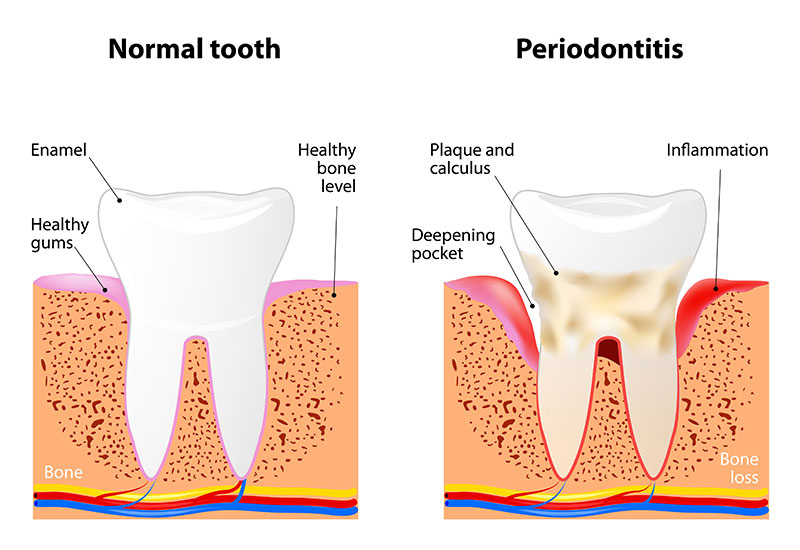 Gum disease attacks the gums and the bone that support the teeth. Plaque is a sticky film that contains oral bacteria. If plaque is not removed, it hardens into calculus (tartar).
Gum disease attacks the gums and the bone that support the teeth. Plaque is a sticky film that contains oral bacteria. If plaque is not removed, it hardens into calculus (tartar).
When plaque and calculus are not removed, they begin to destroy the gums and bone. Gum disease is characterized by red, swollen, and bleeding gums.
How are Gum Diseases Diagnosed?
During your exam with your periodontist, a periodontal probe is used to measure the depths of the pockets surrounding each tooth. When gums are healthy the pocket depths measure 3 mm or less.
When gum disease is present the pocket is deeper and bleeds. The higher the pocket the more severe the disease is. X-rays are used to evaluate the condition of the bone and to detect other problems if present.
Contact Southern Minnesota Periodontics, P.A. today!
Factors That can Increase the Risk of Developing Gum Disease
- Poor oral hygiene and dental neglect
- Tobacco use
- Genetics
- Pregnancy
- Chronic stress and poor diet
- Diabetics and underlying medical issues
- Grinding teeth
- Some medications




